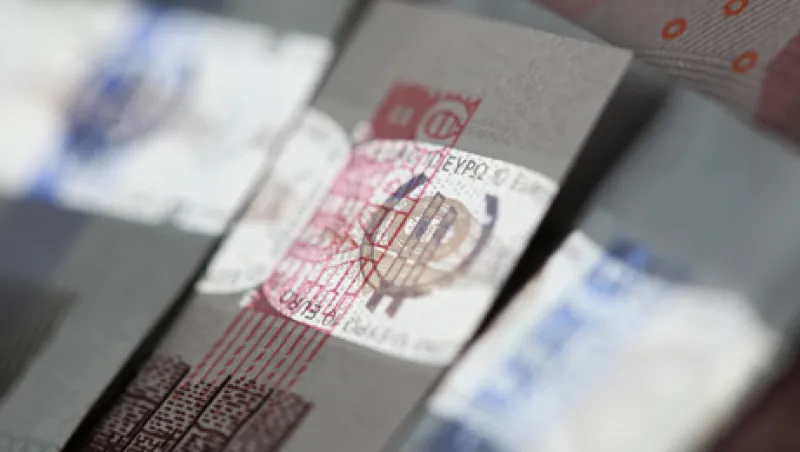The euro has fallen to its lowest point against the dollar since January, as investors flee a currency whose very existence has been thrown into doubt by the euro zone’s continuing financial crisis.
The 12-year-old currency dropped below $1.31 on Tuesday to as low as $1.3009. It was hit by news that Angela Merkel, who as German chancellor holds the key to the euro zone’s future, had called for a cap to the size of the economic bloc’s rescue fund for its member governments’ troubled bonds. Merkel’s comments added to the prevailing sense in markets that euro zone leaders will not be willing to provide the massive backing necessary to restore confidence in the trillions of euros of sovereign debt in the 17-member bloc.
Societe Generale said: “The credibility of the European response is very much in doubt, driving EUR/USD lower.”
The euro’s weakness partly reflects expectations of poor investment returns from assets denominated in the currency. Increasing numbers of economists are predicting the euro zone’s return to recession next year—with many even saying that it has already begun. A recession would damage euro zone stock markets, which have already slid sharply since the beginning of August. These falls have created a negative feedback loop—prompting even more investors to sell euro-denominated equities.
The euro has also dropped because many investors have exited large swathes of the euro zone sovereign bond market, out of fears for the solvency of member countries. Many analysts think that a major European government such as Italy will default unless the European Central Bank ends its opposition to unlimited buying of sovereign bonds, or Germany stops blocking a radical solution such as the issuing of government bonds guaranteed by the entire euro zone. One solution mooted by analysts—a dramatic extension of the size of the euro zone’s bailout fund—was scotched on Tuesday after Merkel said it should be not be raised above the current proposed ceiling of 500 billion euros.
But the recent decline in the euro also reflects an even deeper fear that the euro zone will no longer survive in its present form, as political tensions caused by the debt crisis prompt member states to go it alone.
Almost half of fund managers expect at least one euro zone country to leave the bloc “in the foreseeable future”, with close to a quarter predicting a departure in the first half of 2012, according to a survey published on Tuesday by Bank of America Merrill Lynch. Some economists think it is even possible that the entire euro zone could break up—with all member states returning to their original currencies.
A fragmentation or outright dissolution of the euro zone would create a legal nightmare for investors. If Italy left, for instance, it is unclear whether investors would be paid coupons for currently held bonds—to take just one example—in euros or the Italian lira. The lira would almost certainly depreciate rapidly against the euro if Italy left the euro zone. If so, it is not clear whether investors would be compensated for this depreciation. This nightmare scenario is merely one among an almost limitless range of unwelcome possibilities, when investors consider a post-euro payment system.
Traders say the euro could fall sharply further in the coming days after dropping below the psychologically important $1.31 level, which had been stoutly defended by euro bulls. It sank to $1.19 in June 2010—its lowest point since the credit crunch began in 2007.
The euro also dropped to a fresh nine-month low against sterling on Tuesday, with the pound at €1.188 in U.S. late afternoon trading. The euro was down 1.3 percent on the day against the dollar by the late U.S. afternoon, at $1.301.






